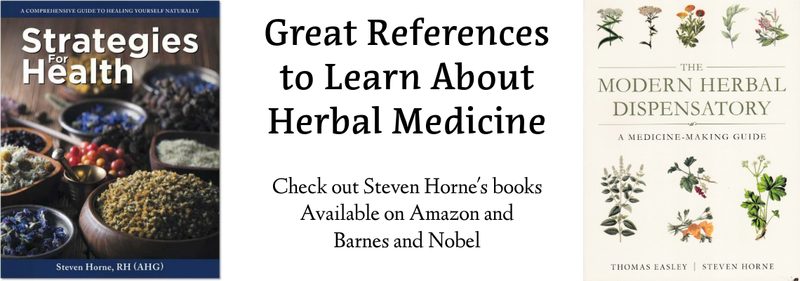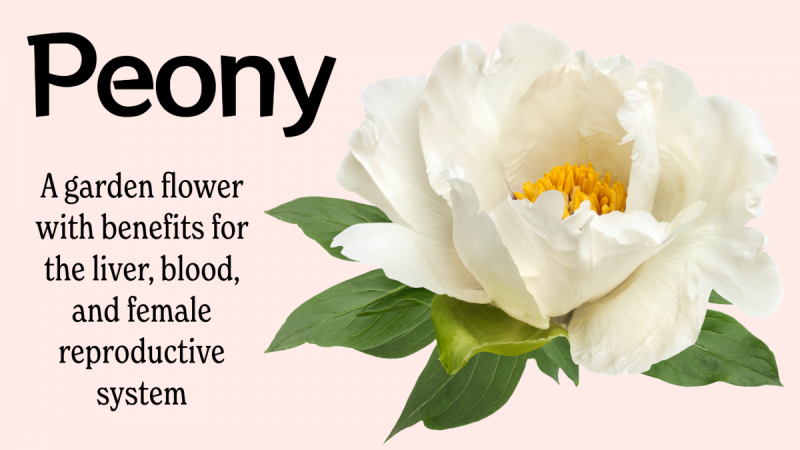
One of the interesting things I encounter when studying traditional Chinese remedies (TCM) is finding out that plants I’m very familiar with have medicinal properties. Peony is an example. You’ve probably seen peonies. They’re a common garden flower, but I didn’t learn about their medicinal uses from Western herbalism. In fact, I always considered them poisonous (an issue I’ll address at the end of the article). It turns out that they are a powerful herbal medicine, especially for women.
The peony genus, Paeonia, contains about 30 herbaceous species and eight woody species. Not all species are used in TCM, so if you’re going to use peonies growing in your garden, make sure they’re the right species as the different species have slightly different properties. With that, let’s discuss the three types of peonies used in TCM.
White Peony
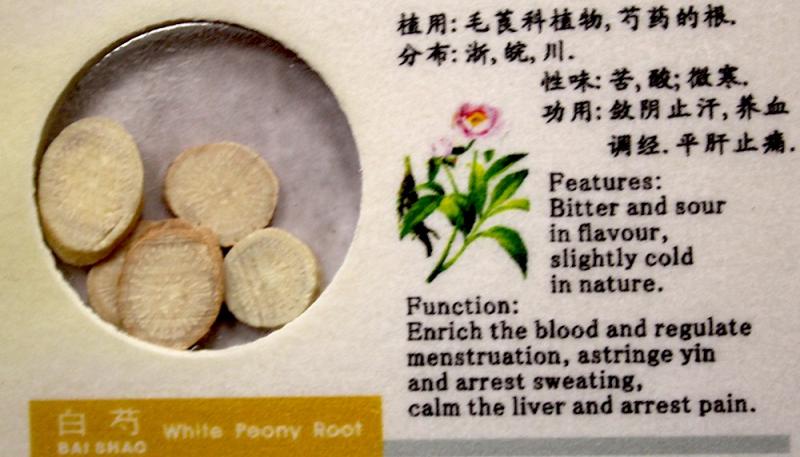 White peony, Paeonia lactiflora, is the common garden peony that comes from China. The flowers aren’t just white, they may also be pink, rose, or red colored. The root is the part used in TCM and is considered to have a bitter and sour energy, with a slightly cold effect. It enters the liver and spleen channels to nourish the blood and harmonize the liver.
White peony, Paeonia lactiflora, is the common garden peony that comes from China. The flowers aren’t just white, they may also be pink, rose, or red colored. The root is the part used in TCM and is considered to have a bitter and sour energy, with a slightly cold effect. It enters the liver and spleen channels to nourish the blood and harmonize the liver.
As a blood tonic, it is often combined with other herbs like dong quai and rhemannia, to support the liver in building up the quantity and quality of blood. Signs of blood deficiency include paleness, fatigue, and heavy menstrual bleeding.
White peony is also a yin tonic, meaning it helps moisten tissues and relieve dryness. It reduces sweating and may be helpful for night sweats.
European Peony
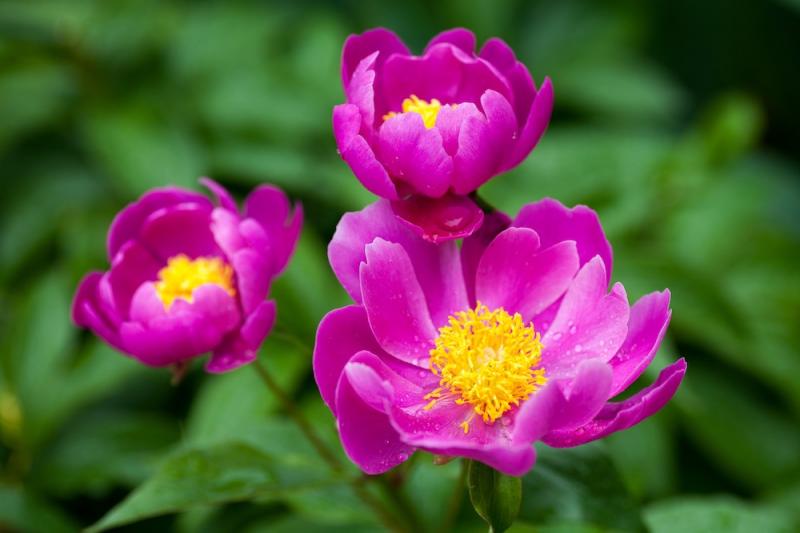 There’s another commonly used garden peony that comes from Europe, P. officinalis. According to Matthew Wood, this species was used in Greek herbal medicine for similar purposes but has been largely forgotten. Matthew says both this and the Chinese white peony, are helpful for estrogen-dominant women, particularly middle-aged women who are plump and red-faced. They’re also helpful for the red flushing associated with menopause.
There’s another commonly used garden peony that comes from Europe, P. officinalis. According to Matthew Wood, this species was used in Greek herbal medicine for similar purposes but has been largely forgotten. Matthew says both this and the Chinese white peony, are helpful for estrogen-dominant women, particularly middle-aged women who are plump and red-faced. They’re also helpful for the red flushing associated with menopause.
Both plants also appear to help ease muscle spasms and reduce pain associated with dysmenorrhea and heavy menstrual bleeding. They may also be helpful with irregular menstruation or amenorrhea (lack of periods) as well as digestive spasms, ulcers, and intestinal infections (usually in combination with other herbs).
Red Peony
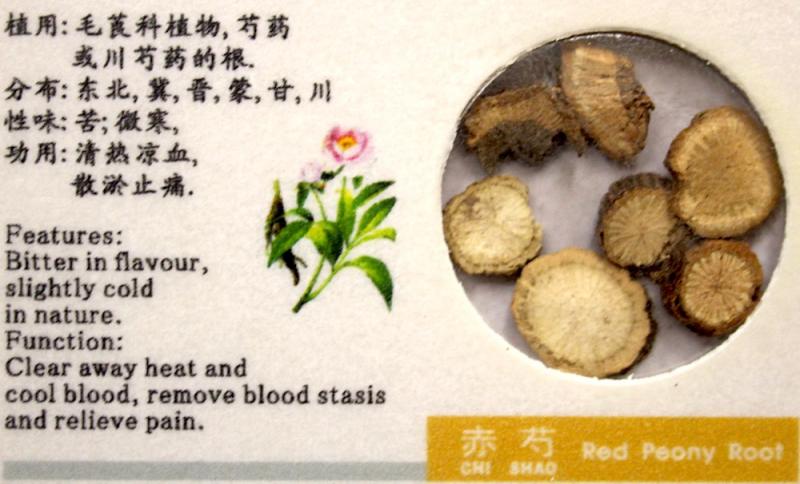 The red peony, P. veitchii and P. abovata, is a more cooling remedy than white peony. It is also sour and bitter in flavor and enters the liver and spleen channels, but it is primarily used to reduce yin-deficient heat and move stagnant blood. It also promotes circulation and eases pain.
The red peony, P. veitchii and P. abovata, is a more cooling remedy than white peony. It is also sour and bitter in flavor and enters the liver and spleen channels, but it is primarily used to reduce yin-deficient heat and move stagnant blood. It also promotes circulation and eases pain.
Yin-deficient heat is not due to an excess of yang or hot energy in the body, but rather to a deficiency of yin or moisture. I like to think of it as heat building up in the body because the radiator, the cooling system of the car, doesn’t have enough radiator fluid.
Blood stasis is something that occurs when you have a bruise. The purplish-black color around the bruise is due to blood that didn’t move freely through the injured area. Red peony has been used to treat bruises, but it is also helpful for other, less easily recognized forms of stagnant blood. These include congested blood flow through the liver, which gives rise to liver congestion and a feeling of swelling and tenderness under the right rib cage. Expelling older, dark blood during menstruation is another example.
Red peony is combined with other herbs in TCM to treat problems like lack of periods, painful periods, and heavy menstrual bleeding. It is also used for swelling, redness, and pain around the eyes, abscesses, and abdominal swelling.
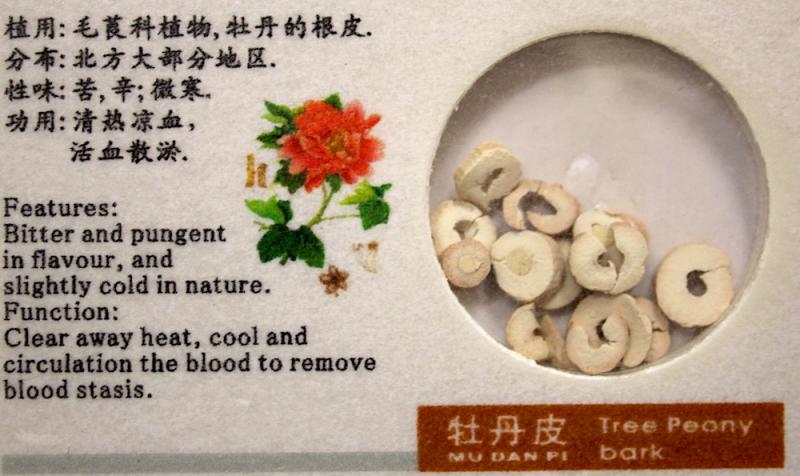 Mountain or Tree Peony
Mountain or Tree Peony
The third major species used in Chinese medicine is tree peony, P. suffruticosa. This one is bitter and acrid, making it more antispasmodic. Mountain peony enters the liver, heart, and kidney meridians. Like red peony, it is cooling and heat-clearing and like white peony, it has a harmonizing or tonic effect on the liver. So, it’s also used for menstrual problems. It can help treat bruises, abscesses, and abdominal swellings, and has also been used for epilepsy.
Peony Toxicity
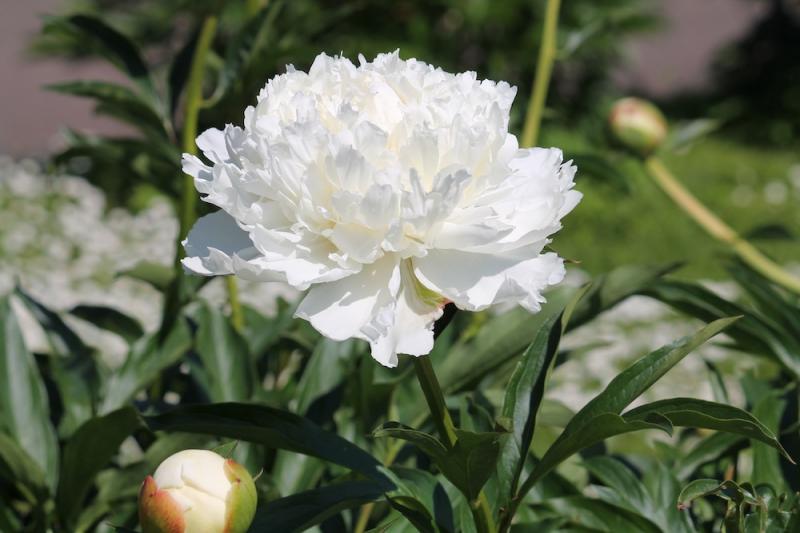 There are reports of peonies being toxic to humans if consumed in large quantities, as well as to dogs and cats if they eat them. However, the Chinese herb texts list peony as nontoxic and it is used as a food in China, being added to things like soups.
There are reports of peonies being toxic to humans if consumed in large quantities, as well as to dogs and cats if they eat them. However, the Chinese herb texts list peony as nontoxic and it is used as a food in China, being added to things like soups.
When I tried looking up the symptoms of peony poisoning, what few sources I found suggested it can cause digestive upset—diarrhea, nausea, and vomiting. It may also cause fatigue and lethargy. These are not uncommon symptoms of herbs that have antispasmodic or liver-cleansing effects. For example, lobelia, which I use all the time, is capable of causing these effects in larger doses. So can herbs like baptisia and blue flag, which have strong cholagogue effects.
Cats and dogs will sometimes instinctively eat plants to cleanse their system (including grass) so that they throw up, so I wouldn’t fret over your pets being “poisoned” by peonies. It doesn’t look like it would kill you, just throws you into an overly strong purge, something I don’t recommend.
Using Peony
The safety of peonies may depend on the particular species. So, I’d stick with the species mentioned in this article. I’d also recommend using the remedy like the Chinese do, as part of a formula, rather than as a single herb.
It’s a remedy you could easily grow in your garden, but I’d look for a source that gives you the Latin names of the variety you’re purchasing. You dig the roots in the fall and dry them. They can be added to soups and broths or you can powder them for use in capsules. The TCM dose is up to five grams a day, but I’d stick to around two or three (4-6 capsules) to start. You can also tincture the herb and take about 20-40 drops, three times a day. If you want to experiment with using them as a food, here’s an article I found with some suggestions, How to Eat a Peony (and other ways to use them).
Steven's Articles
-

-
The Health Benefits and Problems with Coffee
This popular caffeinated beverage can be beneficial…
October
-

-
Understanding Caffeine & Cellular Adaptation
Preserving the power of caffeine's buzz and the…
September
-

-
Horseradish
A pungent spice for aiding protein metabolism…
-

-
Banaba or Crepe Myrtle
A beautiful tree from Southeast Asia whose leaves…
August
-

-
Monkeyflowers
Flower essences to help see ourselves more clearly…
-

-
Mariposa Lilies
Strengthening the bond between mother and child…
-

-
The Noble Bay Leaf
A common kitchen herb for aiding digestion and…
-

-
Epimedium: Horny Goat Weed
A circulatory stimulant and kidney yang tonic…
July
-

-
The Medicinal and Nutritional Benefits of Apricots
A nutritious fruit and valuable medicinal seed for coughs
-

-
Dogwoods
Asian dogwood is used to stop excessive discharge,…
June
-

-
Neem: The Village Pharmacy
A popular Ayurvedic remedy for dental and immune…
-

-
Spilanthes: The Toothache Plant
A traditional remedy for teeth and gums, as well…
-

-
Forsythia
An anti-inflammatory, fever-reducing, and infection fighting herb
May
-

-
Buckwheat (Kashi)
A delicious, high protein, gluten-free, gut-healthy food
-

-
Leaky Gut Syndrome
Plugging the leaks on the underlying cause of…

